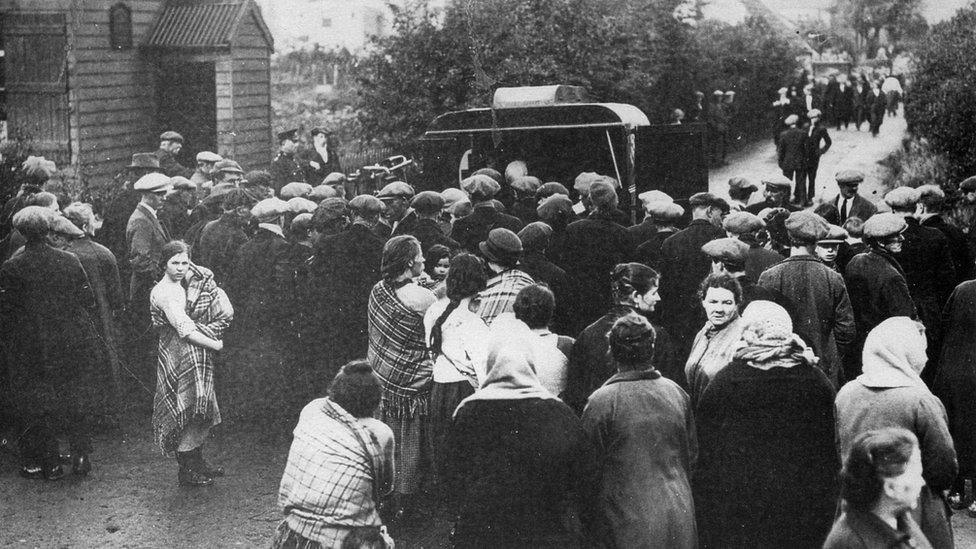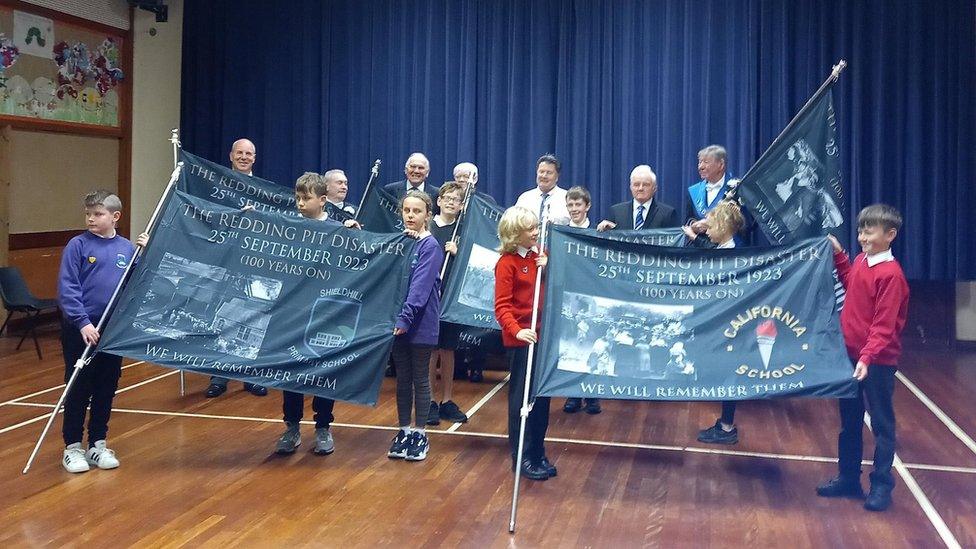Memorial events for mining disaster 100 years ago
- Published

The families of those trapped underground gathered at the pit head
The centenary of one of Scotland's worst mining disasters has been marked by memorial events over the weekend.
Forty men died at Redding Colliery, near Falkirk, in 1923 when a sudden inrush of water flooded a pit, trapping 66 miners underground.
Hundreds were expected to attend a march and ceremony in the village as an updated memorial stone is rededicated.
Relatives of those affected by the disaster have travelled from as far afield as America, Canada and Austria.
The miners were working at No 23 pit early in the morning of 25 September 1923 when there was a sudden inrush of water from disused mine workings.
Trapped underground
A huge rescue operation began, involving teams from the Falkirk district and across Scotland.
The first 21 survivors were brought out after about five hours, but another five men spent 10 days trapped underground.
Most of the 40 men who died are thought to have drowned in the initial flood, but 11 survived for up to a fortnight in a remote, dry section of the pit that the rescuers did not reach in time.

Local schoolchildren will carry banners commemorating the disaster
After the Redding No 23 pit closed in 1958 a memorial stone was unveiled at Redding Cross listing the names of those who died, but the new memorial aims to tell the story of the disaster for a new generation.
A sculpture also remembers the families who waited anxiously at the pit head for news.
Sir William Wallace Grand Lodge of Scotland Free Colliers, who have led the restoration project over the past five years, planned to march from Reddingmuirhead to the memorial.
They were due to lay wreaths at the site of the old pithead and at "the gutterhole" - a disused shaft that was used to reach the survivors.
Also taking part were local school pupils, Linlithgow Reed Band and the Bo'ness and Carriden Brass Band.
Some content for this article was provided by Kirsty Paterson, from the Local Democracy Reporting Service.